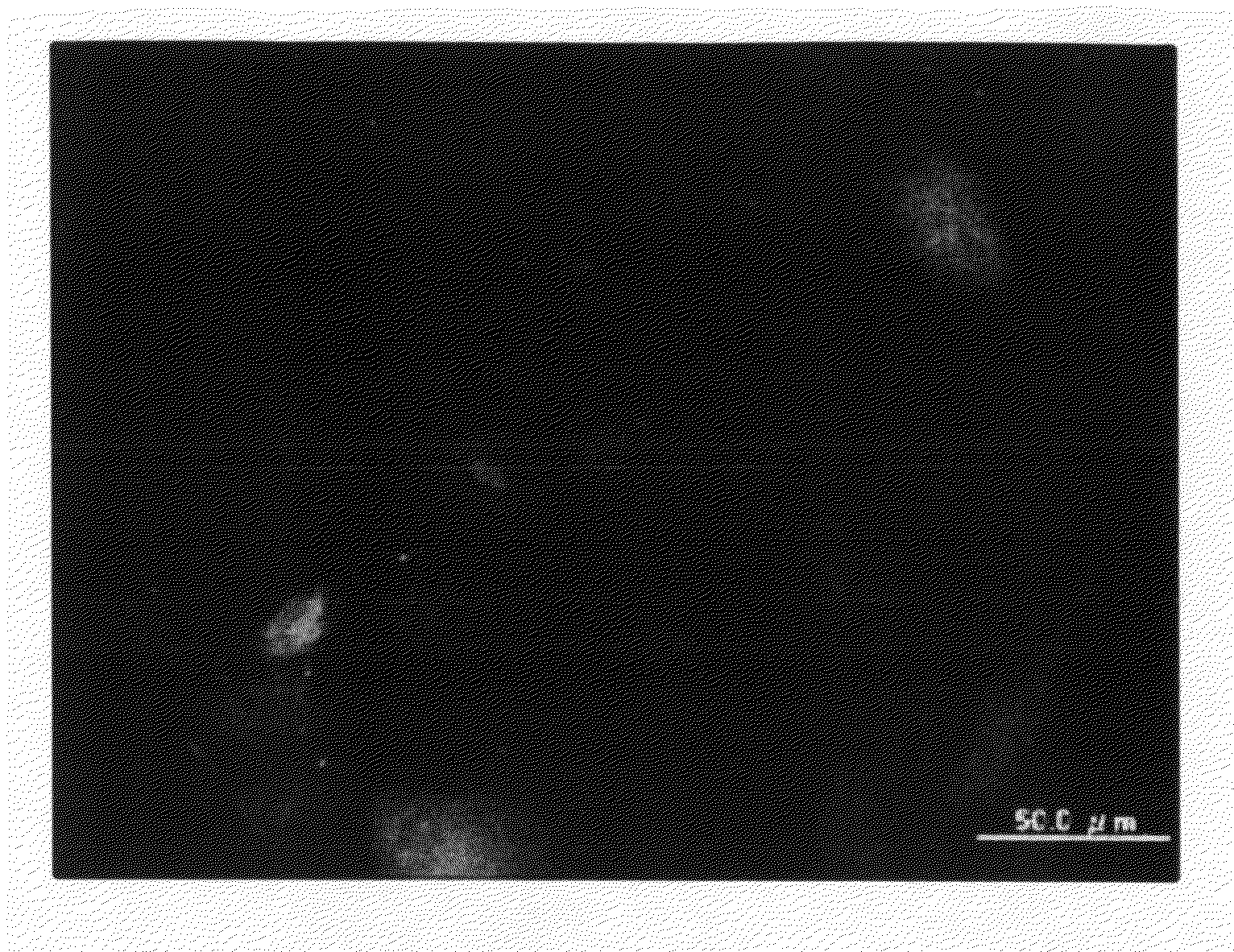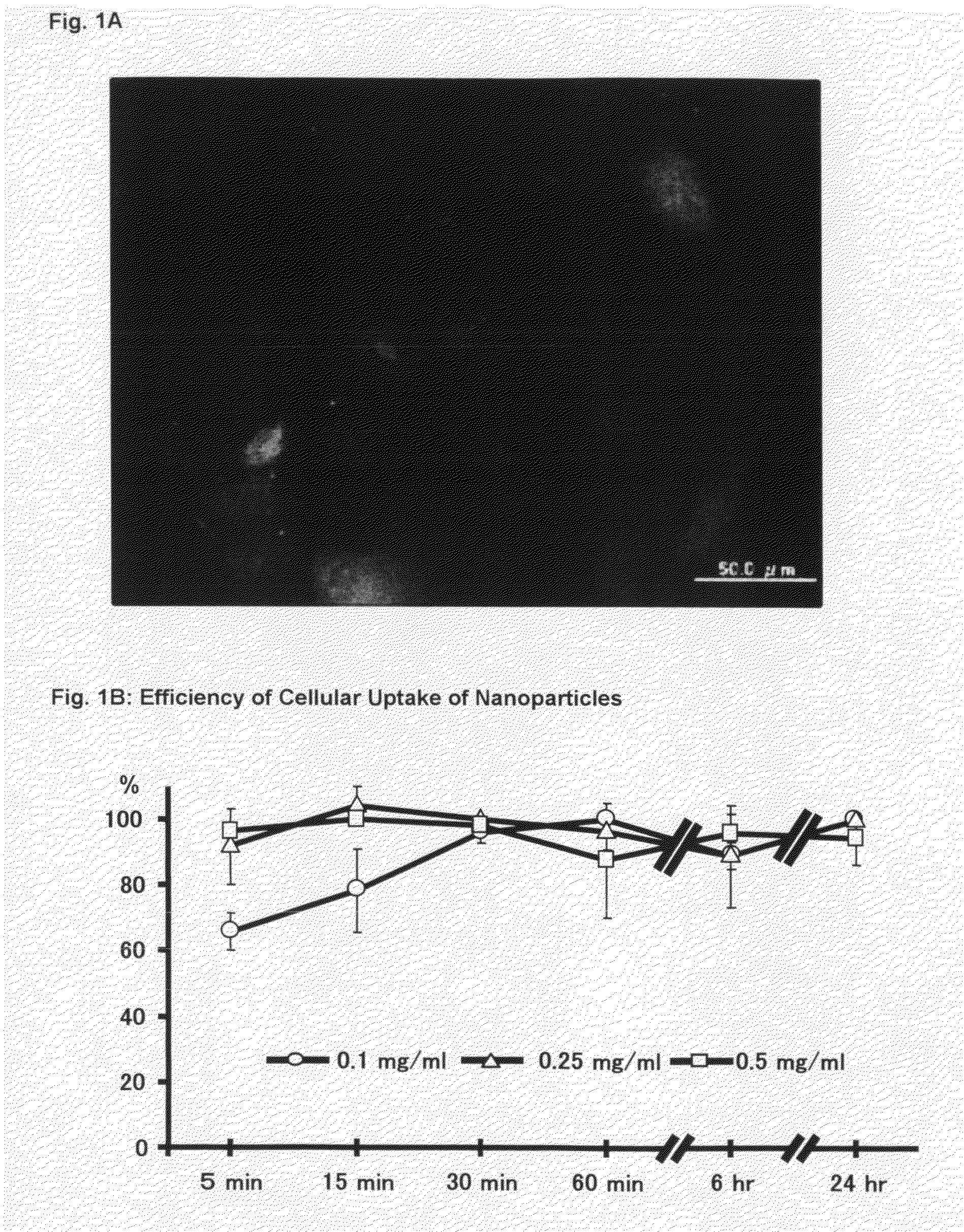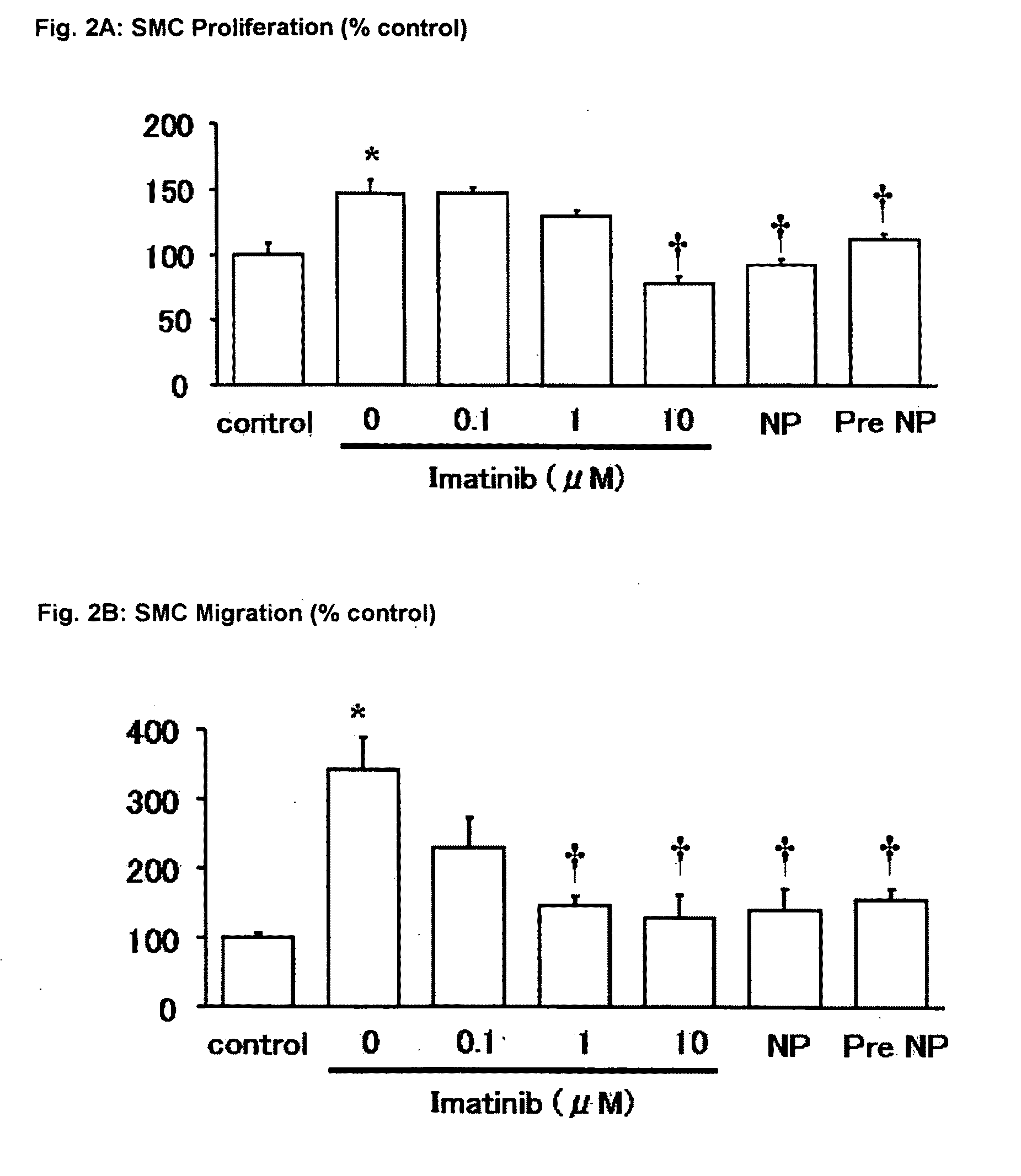Nanoparticles Comprising a PDGF Receptor Tyrosine Kinase Inhibitor
a technology of pdgf receptor and nanoparticles, which is applied in the direction of surgery, drug compositions, cardiovascular disorders, etc., can solve the problems of ischemic injury, stroke or myocardial infarction, and no beneficial effects of systemic administration of imatinib against restenosis, and achieve excellent passing ability
- Summary
- Abstract
- Description
- Claims
- Application Information
AI Technical Summary
Benefits of technology
Problems solved by technology
Method used
Image
Examples
example 1
Preparation of Nanoparticles
[0111]Fluorescence marker or Imatinib loaded PEG-PLGA nanoparticles are prepared by the solvent diffusion method. Hydrophobic poly (D, L-lactic-co-glycolic acid) (PLGA) with L:G molar ratio of 75:25 and MW of 20000, polyvinylalcohol (PVA) with MW of 30,000-70,000, fluorescence marker coumarin-6, are dissolved in ethyl acetate. Hydrosoluble polyethylene glycol (PEG with an average molecular weight ranging from 2,000 to 20,000 purchased from Aldrich Chemical Co) is first dissolved in water and then emulsified in the PLGA dissolving organic phase. An oil phase solution of PEG-PLGA is slowly poured into an aqueous solution containing PVA and emulsified using a microtip probe sonicator. The PEG-PLGA copolymer solution also contained 0.05% (w / v) coumarin-6 or 5% (w / v) fluoresceine isothiocyanate (FITC) as fluorescence marker or 15% (w / v) Imatinib, for the preparation of fluorescence marker or Imatinib loaded PEG-PLGA nanoparticles, respectively. The resulted oi...
example 2
[0112]Rat aortic SMCs (Toyobo) are cultured in DMEM (Sigma) supplemented with 10% FBS (Equitech-Bio, Inc.) except where otherwise indicated. Human coronary artery SMCs (Cambrex Bio Science Walkersville, Inc.) are cultured in SmGM-2 (Cambrex Bio Science). Each Cells are used between passages 4 to 8. Rat aortic SMCs are seeded on chambered cover glasses and incubated at 37° C. / 5% CO2 environment until cells are subconfluent. On the day of experiment, the growth medium is replaced with the coumarin-6 loaded PEG-PLGA nanoparticles suspension medium (0.5 mg / ml) and then further incubated for 1 hour. At the end of experiment, the cells are washed three times with PBS to eliminate excess nanoparticles which are not incorporated into the cells. Then, the cells are fixed with 1% formaldehyde / PBS buffer and nuclear is counterstained with propidium iodide (PI). Cellular uptake of coumarin-6 loaded PEG-PLGA nanoparticles is evaluated by fluorescence microscopy.
[0113]Alter...
example 3
Cellular Uptake and Intracellular Distribution of Nanoparticles
[0114]Rat aortic SMCs are seeded on 48-well culture plate to an initial concentration of 1×105 cells per well (n=4 per well). The coumarin-6 loaded PEG-PLGA nanoparticles suspension medium is added to the cells at final concentration ranging from 0.1 to 0.5 mg / ml. To examine the effects of incubation time on intracellular uptake, the duration is varied from 5 minutes to 24 hours. At different time points, the nanoparticle-containing medium is removed, and the cells are washed three times with PBS. The cells are fixed with 1% formaldehyde / PBS buffer. Differential interference contrast (DIC) and fluorescence images are captured with a microscope. The images are digitized and analyzed with Adobe Photoshop and Scion Image Software. The total number of fluorescence positive cells in each field and the number of total cells was counted. Cellular uptake percentage was assessed by the percentage of fluorescence positive cells pe...
PUM
| Property | Measurement | Unit |
|---|---|---|
| water-solubility | aaaaa | aaaaa |
| mean diameter | aaaaa | aaaaa |
| diameter | aaaaa | aaaaa |
Abstract
Description
Claims
Application Information
 Login to View More
Login to View More - R&D
- Intellectual Property
- Life Sciences
- Materials
- Tech Scout
- Unparalleled Data Quality
- Higher Quality Content
- 60% Fewer Hallucinations
Browse by: Latest US Patents, China's latest patents, Technical Efficacy Thesaurus, Application Domain, Technology Topic, Popular Technical Reports.
© 2025 PatSnap. All rights reserved.Legal|Privacy policy|Modern Slavery Act Transparency Statement|Sitemap|About US| Contact US: help@patsnap.com



